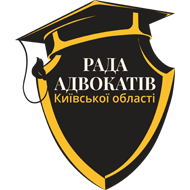About conflict management in legal practice, a lawyer, business mediator of the Industrial and Commercial Chamber of Munich and Upper Bavaria, managing partner of Law of Victory LLC, mediator of the Mediation Center of the Kyiv CCI, certified Soft Skills development trainer Marina Saienko shared during a professional development event for lawyers at the National University of Kyiv-Mohyla Academy.
The lecturer thoroughly analyzed conflict management in legal practice with the participants, including:
- 1. Causes and triggers of conflict.
- 2. Risks of uncontrolled conflicts.
- 3. Functions of conflicts.
- 4. Conflicts as a growth point.
- 5. Behavior styles in conflicts.
- 6. Conflict management strategies.
- 7. Mediation as an effective way to resolve conflicts.
- 8. Tools for conflict prevention in legal practice.
- 9. Tips for effective communication of a lawyer with clients, colleagues, opponents.
 Within the framework of characterizing conflict management in legal practice, the focus is on the following:
Within the framework of characterizing conflict management in legal practice, the focus is on the following:
1. Causes and triggers of conflict
Conflict is a collision of different positions, ideas, thoughts, interests, views that are significant to the participants and are opposed to each other.
Conflict causes are events, situations, facts that are a prerequisite for conflicts.
Conflict causes may include:
- Resource limitations;
- Uncertainty of perspectives;
- Differences in values;
- Imperfection of rules;
- And so on.
Conflict triggers are conflict generators that trigger the transition of conflict to a new stage.
For example: words, actions, intonations, etc.
Conflict causes:
- Unjustified expectations from interaction;
- Conflict of interests/views/values;
- Lack or absence of communication;
- Disagreement with convenient communication formats;
- Different perception channels;
- Lack or inefficiency of rules;
- Lack of respect and trust;
- Lack of interest;
- Different goals;
- Other.
2. Risks of uncontrolled conflicts
- Unpredictability of consequences;
- Direct losses;
- Reputational losses;
- Distraction from other goals;
- Other.
3. Functions of conflicts:
- Information gathering;
- Clarification of relationships;
- Activation of social connections;
- Relief of tension;
- Search for new solutions;
- Other.
4. Conflicts as a growth point
First and foremost, conflict is an opportunity for growth. It is not a guarantee of growth, but it is a good opportunity.
For growth, attention should be focused on:
- conflict causes,
- parties’ needs.
Conflict is always a signal of the need for change.
5. Behavior styles in conflicts
- Dominance (victory at any cost; came, saw, conquered):
- Dominance is applied when the party has authority and power.
Advantages: speed.
Risks: overestimation or underestimation of strength.
- Accommodation.
Accommodation is applied:
- when the dispute is not very important, it is more important to maintain relationships;
- when the party understands that it is better to concede.
- Avoidance (no active actions, conflict denial):
- when the party understands that it lacks the strength to resolve the conflict now;
- when time is needed to build communication, strengthen one’s position.
- Compromise (mutual concessions of the parties):
- when there is not enough strength to resist the opponent’s struggle;
- compromise does not end the conflict, but temporarily freezes it.
- Consensus (cooperation, mediation):
Advantages: expanding the negotiation field.
Risks: spending a lot of time.
6. Conflict management strategies
- Power.
This strategy involves the use of power, authority, or force to resolve the conflict. One of the participants dominates over the other, forcing them to accept their decision.
- Right.
The conflict is resolved by appealing to norms, rules, or laws. The decision is based on objective criteria (rules, agreements, laws).
3) Interest.
The central strategy is mutual understanding and search for common interest. Participants try to find a compromise or a solution that satisfies both sides.
7. Mediation as an effective way to resolve conflicts
Mediation is an out-of-court voluntary, confidential, structured procedure during which parties, with the help of a mediator (mediators), try to prevent or resolve a conflict (dispute) through negotiations.
Mediation is conducted with the mutual consent of the mediation parties, taking into account the principles of voluntariness, confidentiality, neutrality, independence, impartiality of the mediator, self-determination, and equality of the parties’ rights in mediation.
Mediation is a tool for preventing and resolving conflicts.
Mediation is also used for prevention.
An important point is that in mediation, decisions are made by the parties, not the mediator.
During mediation, a lawyer:
- Prepares the client for mediation;
- Participates with the client in mediation.
8. Tools for conflict prevention in legal practice
- Active listening;
- Questioning;
- Rephrasing;
- Framing;
- Reframing;
- Summarizing;
- Appropriate non-verbal communication;
- Human-centeredness.
9. Tips for effective communication of a lawyer with clients, colleagues, opponents
- Conflict prevention:
- Trust;
- Establishment of rules;
- Continuous bilateral feedback;
- Goal alignment;
- Teamwork (belonging).
- Effective communication algorithm:
- Trust;
- Active listening;
- Empathy;
- Dealing with expectations;
- Quality interviewing;
- Addressing needs;
- Dealing with risks;
- Forecasting work;
- Individual approach.
Source – https://tinyurl.com/3kf5jm32



